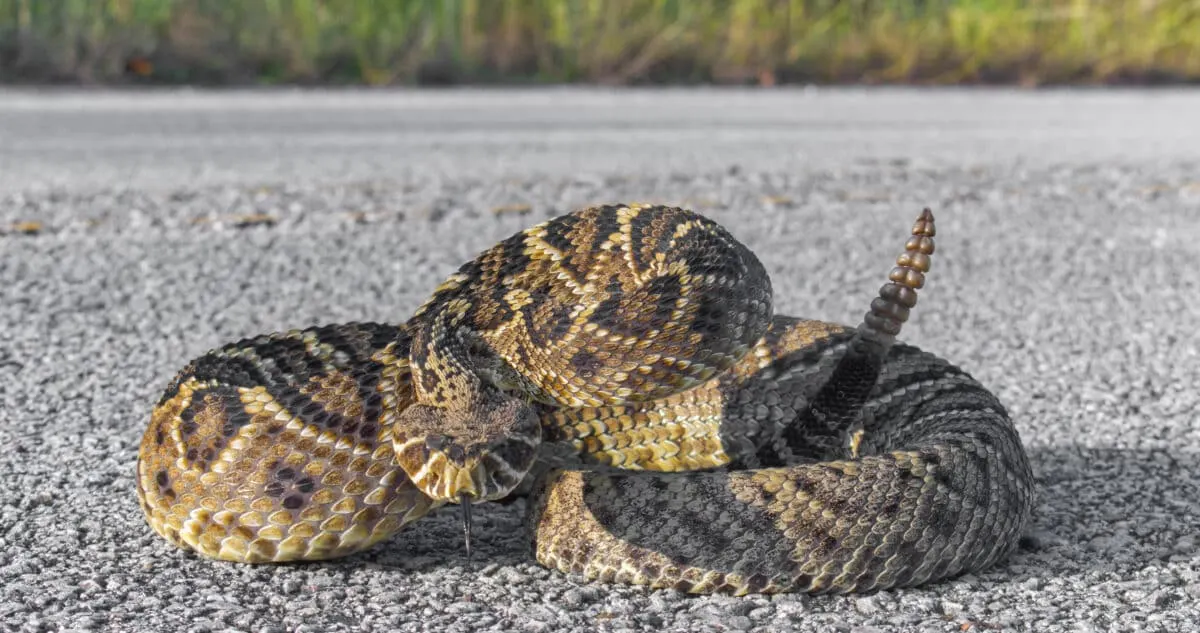Are you afraid of snakes? I am! That’s why every time I travel somewhere, I try to find out which snakes to look out for. The United States is home to 36 indigenous rattlesnakes, the giant venomous snakes in the US.
If you’re looking for safe places to plan holidays in America, we will discuss the US states that don’t have rattlesnakes so that you can have a fantastic time without worrying about your and your loved ones’ safety.
Intro: US States That Don’t Have Rattlesnakes
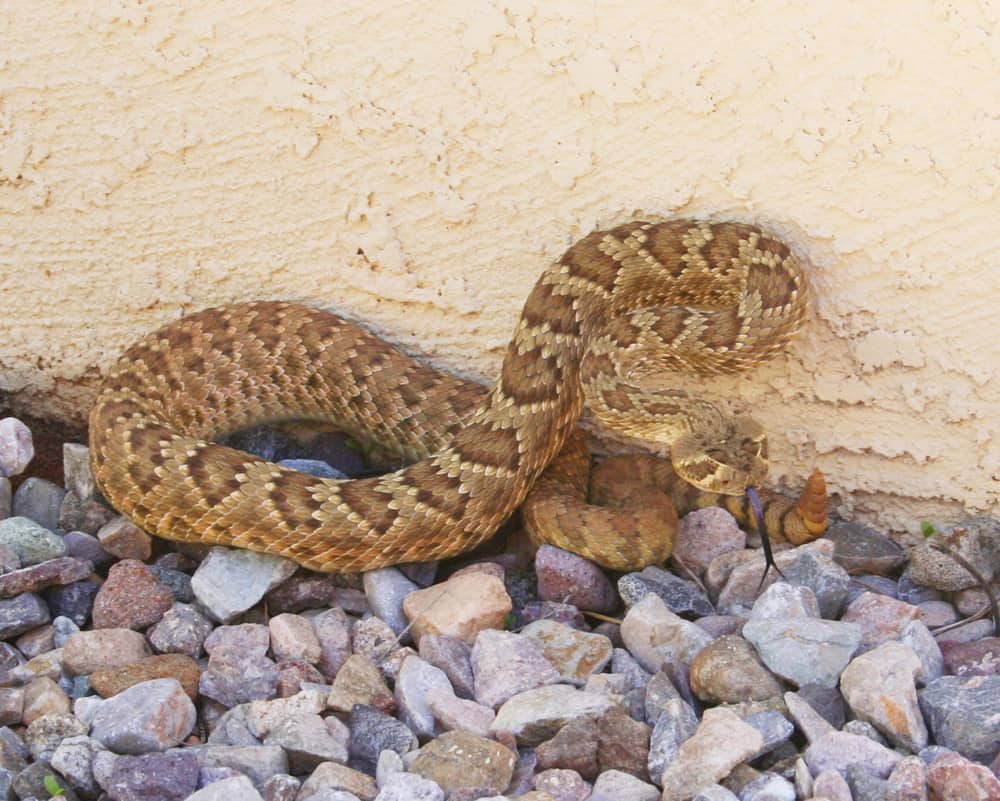
Snakes are ranked among some of the most dangerous predators.
Usually, when people plan to go for a holiday or any outdoor camping trip with friends or family, they must ensure that the place is safe. If you plan to explore in open fields or somewhere close to woods, there is a high probability that you will find snakes.
In the US, rattlesnakes are dangerous to tourists and locals who unknowingly enter their habitat. Unlike many other animals, these snakes will bite anyone who comes their way, whether they feel endangered or not. If you know little about rattlesnakes and how to identify them, read on for more information.
Jump to any section or read the entire article:
What Is A Rattlesnake?
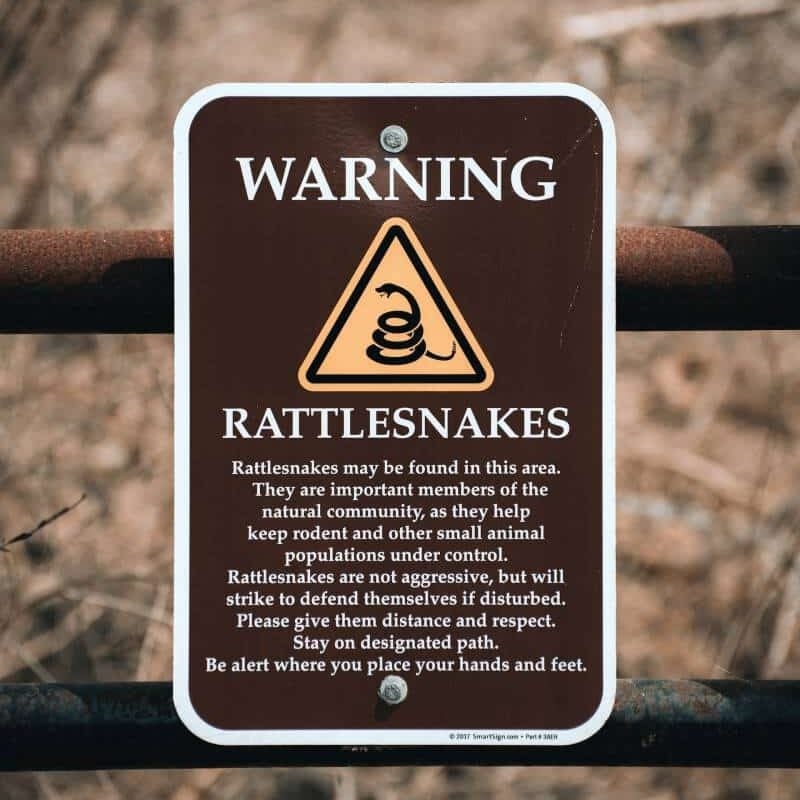
A rattlesnake is a species of snake with a rattle on its tail; that’s where they take their name from. These snakes usually have triangle-shaped heads and large spotted bodies.
It is one of the most vicious snakes, and it uses its rattle as a sign to warn predators. Each time the snake molts, it adds to the rattle’s collection of interlocking scales.
When they crawl, a sharp muscle contraction occurs in their bodies which causes their scales to click together. Due to this muscle contraction, a prominent noise comes from the rattle they have in their tails. The distinctive “rattle” near the tail’s tip makes them one of North America’s most recognizable groups of snakes.
Types Of Rattlesnakes
There are around 36 recognized rattlesnake species, all of which are indigenous to the US. A few of the most commonly found rattlesnake types are:
1. Timber Rattlesnake
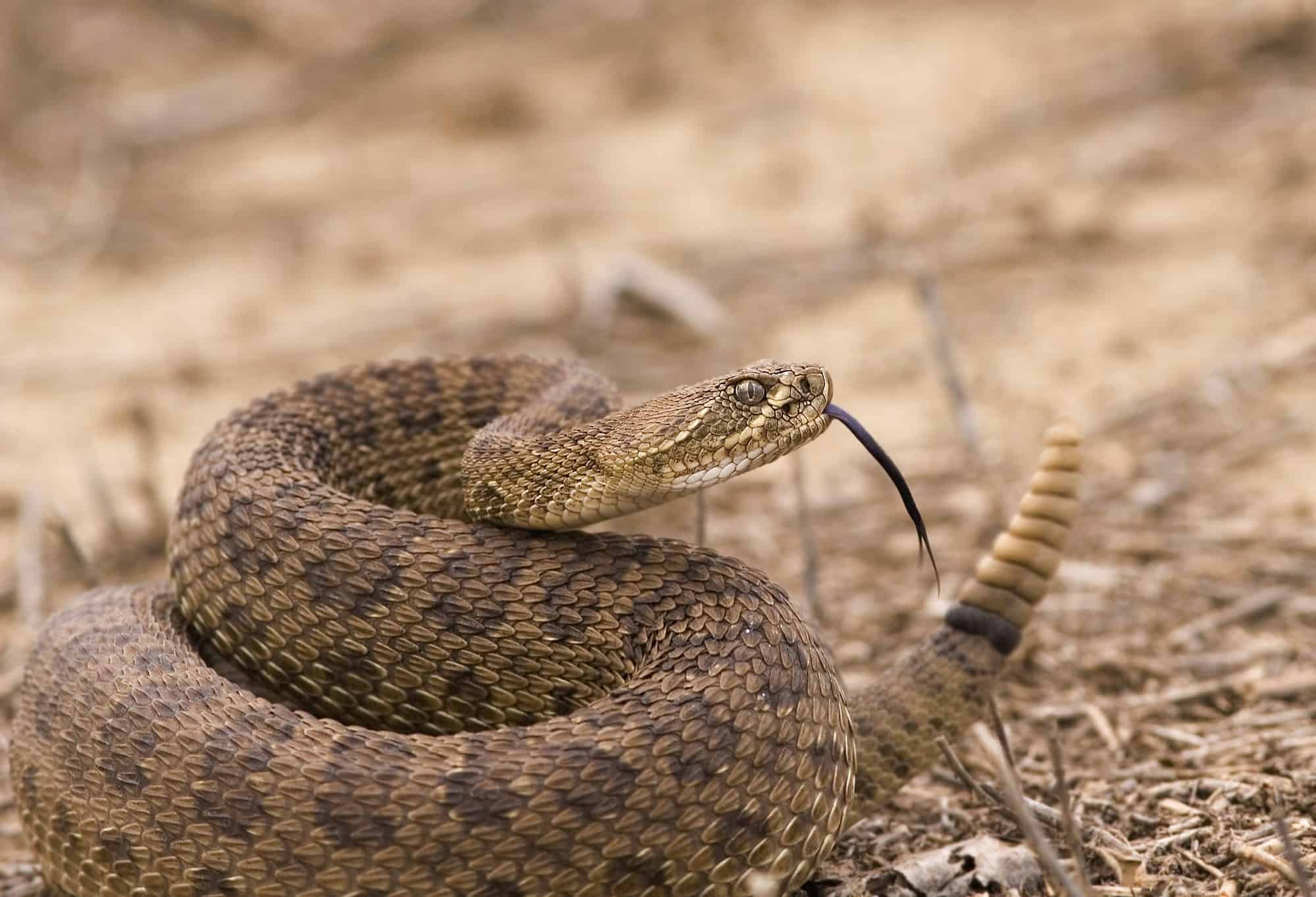
One of the more lethargic and sluggish rattlesnake species is the Timber Rattlesnake. This species is one of the more docile and sluggish ones. They won’t use their rattle or attack you unless they are disturbed.
Timber Rattlesnakes make their homes in hilly highlands with deciduous forests, meadows, and rocky hillsides.
These snakes are also frequently seen slithering through areas with tall grass.
2. Western Diamondback Rattlesnake
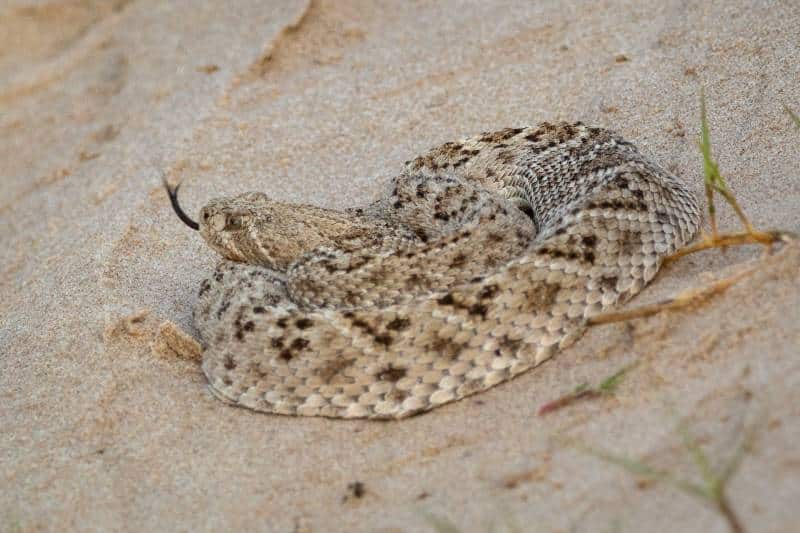
The largest rattlesnake species can grow up to 8.5 feet long, making it the longest rattlesnake in the country. These are the Western Diamondback Rattlesnakes.
Its name comes from the striking diamond-dorsal pattern that covers its entire body. Its other distinguishing characteristics are alternating black and white bands on the tail, where it transforms into a rattle.
Western diamondback rattlesnakes have bitten more humans in the United States than any other species of Rattlesnake. They occur in a vast number of different habitat types, even in flat and infertile areas. However, these snakes are susceptible to exploitation by raptors, other snakes, roadrunners, and predatory animals in the wild.
3. Eastern Diamondback Rattlesnake
Reaching up to 8 feet, this snake is the second-longest Rattlesnake in America and has the heaviest body mass. Eastern diamondback rattlesnakes have the most distinctive pattern of all North American rattlesnakes.
The dark diamond pattern on their bodies significantly enhances their ability to blend easily in with their surroundings. These snakes live near gopher tortoises, using their burrows as cover when hibernating, giving birth, and avoiding predators.
They also find shelter in tree stumps and among tree roots. They slither through these networks of root systems that function as a series of tunnels.
4. Pygmy Rattlesnake
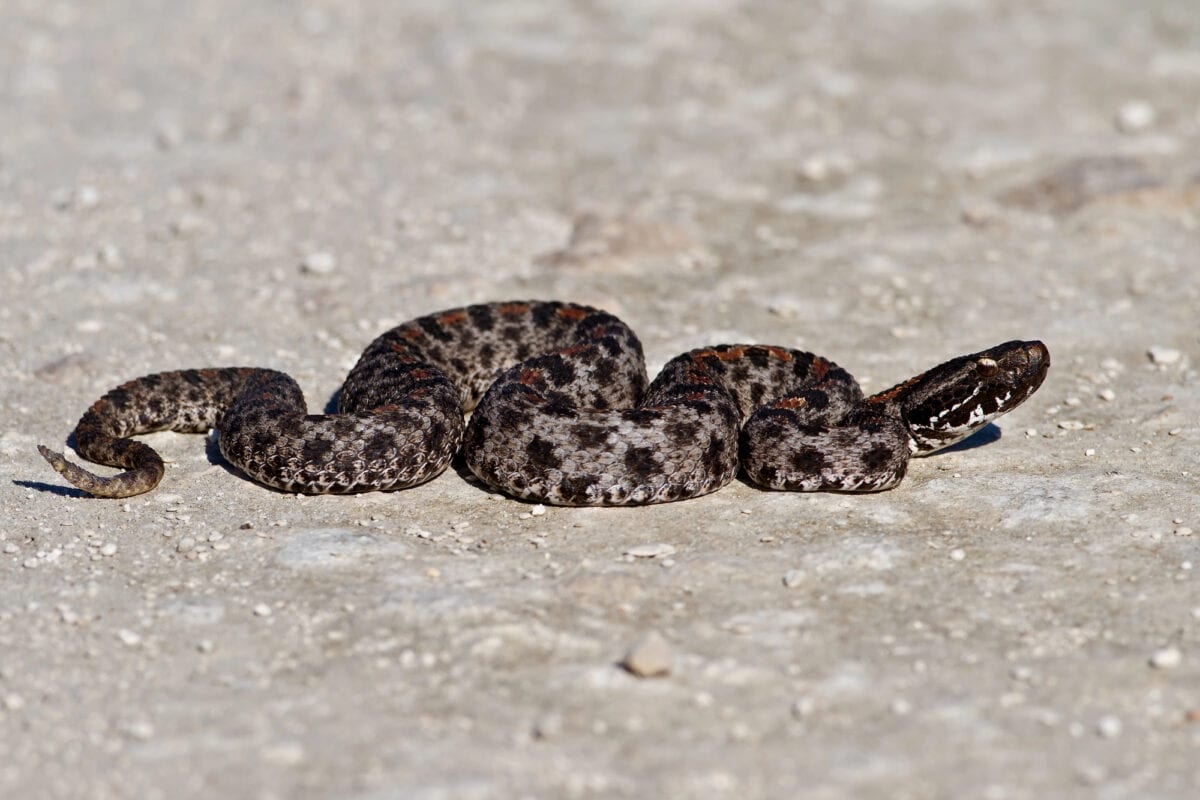
Pygmy Rattlesnakes live in various habitats, such as pine woods, close to swamps and marshes, wet grasslands, and dry river bottoms. These snakes are also often observed in wide-open grassy regions where prey is accessible.
They display a broad spectrum of coloring. Some species are known for their orange-to-red hue, while others are incredibly dark, nearly black, or patternless.
5. Ridge-Nosed New-Mexico Rattlesnake
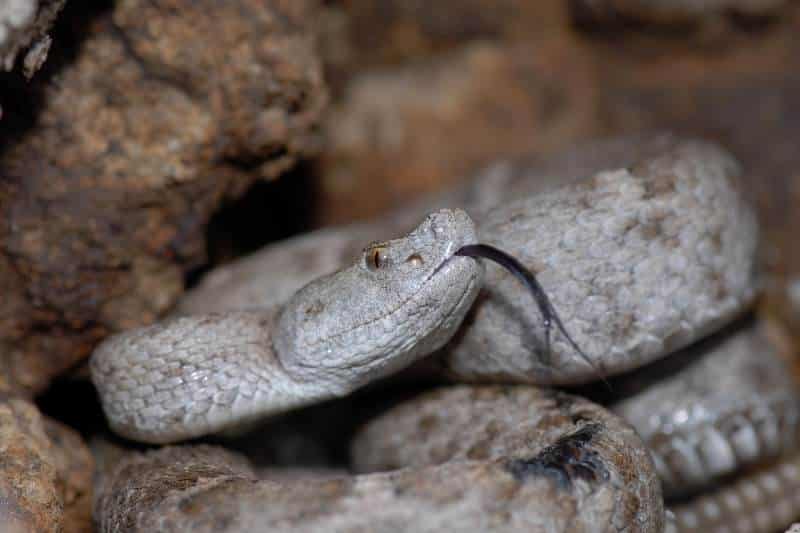
This snake’s habitat is in the southeast of New Mexico and has a relatively small distribution. The ridge-nosed rattlesnake of New Mexico is a threatened species. Their color makes it easier for them to blend in with their surroundings.
The distinctive feature of this species is the upturned scales that have formed along the sides of its nose. This snake can also climb trees and plants to view its prey better. To ambush its prey, it frequently camouflages itself in leaf litter.
6. Banded Rock Rattlesnake
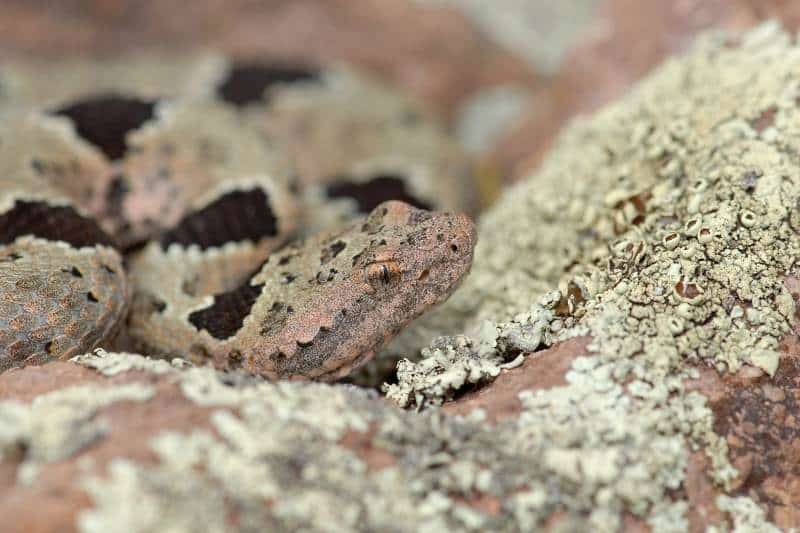
These rattlesnakes are among the smaller species in the United States. They rarely grow to lengths of more than 2 feet. Due to their color, small size, and speed, these rattlesnakes are exceedingly cryptic and are not frequently seen.
You will mostly find them in mountain ranges. Banded Rock Rattlesnakes only live at higher altitudes, up to 8000 feet above sea level. They live in open rockslides, rocky outcrops, and rocky places in pine-oak and conifer forest habitats.
When they feel like there is a threat nearby, they will hide.
7. Sidewinder Rattlesnake
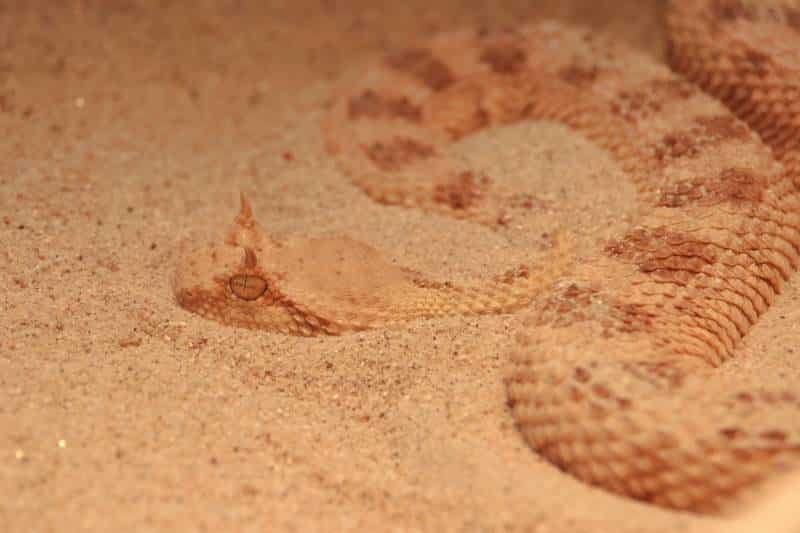
The American Southwest is home to a small species of Rattlesnake that lives in hot, sandy deserts: the Sidewinder Rattlesnake.
Sidewinder Rattlesnakes have two very distinctive properties. One, they have a modified supraocular scale that resembles a horn over each eye. Two, they have a spinal ridge that runs the length of their spine. They are also known for their capacity to move across enormous dunes by traveling sideways for extended periods.
To deal with high surface temperatures in deserts, Sidewinder Rattlesnakes evolved the ability to move via “sidewinding”. During this highly coordinated movement, the Sidewinder will raise all but two tiny portions of its body above the surface at any given time. This helps in preventing heat absorption from the warm sand.
8. Mojave Rattlesnake
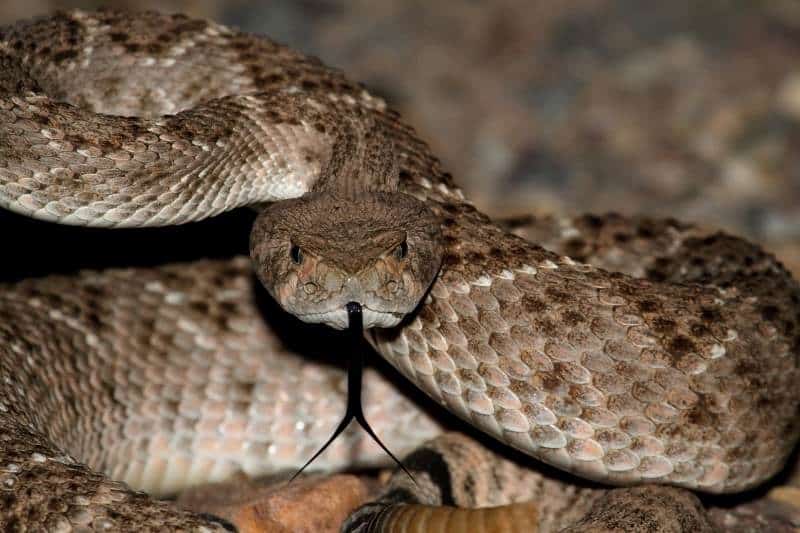
The Mojave Rattlesnake has one of North America’s most lethal snake venoms. If you get bitten, you must get medical treatment very quickly.
Luckily, they are hard to miss. These rattlesnakes can grow 39–54 inches long and inhabit desert regions without much vegetation.
This snake has a dark diamond-shaped pattern on the center of its back and a white band on its tail.
9. Eastern Massasauga Rattlesnake
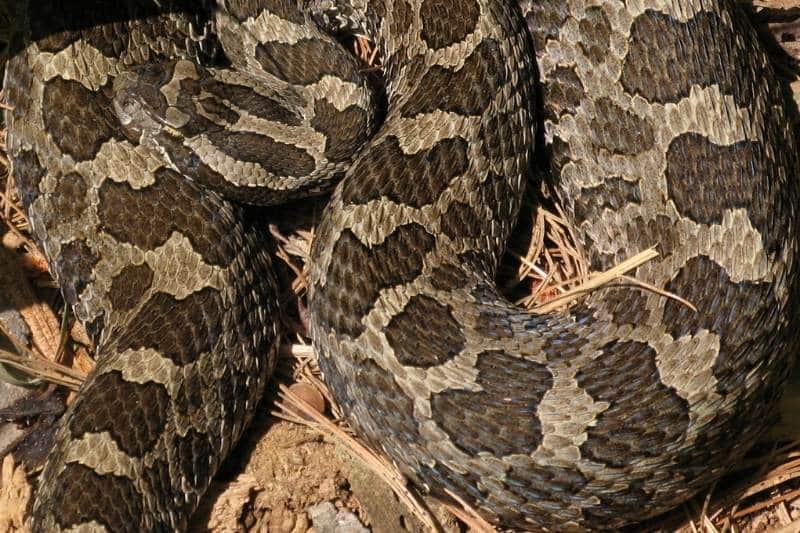
The Eastern Massasauga Rattlesnake is a tiny, thick-bodied rattlesnake that lives in shallow marshes. It is one of just three rattlesnake species that inhabit Canada. It has a gray or reddish-brown color with oval-shaped blotches in shades of black or very dark brown on its back.
This rattlesnake is at risk of extinction due to habitat loss and changes in the climate that contribute to its reduced population numbers.
10. Prairie Rattlesnake
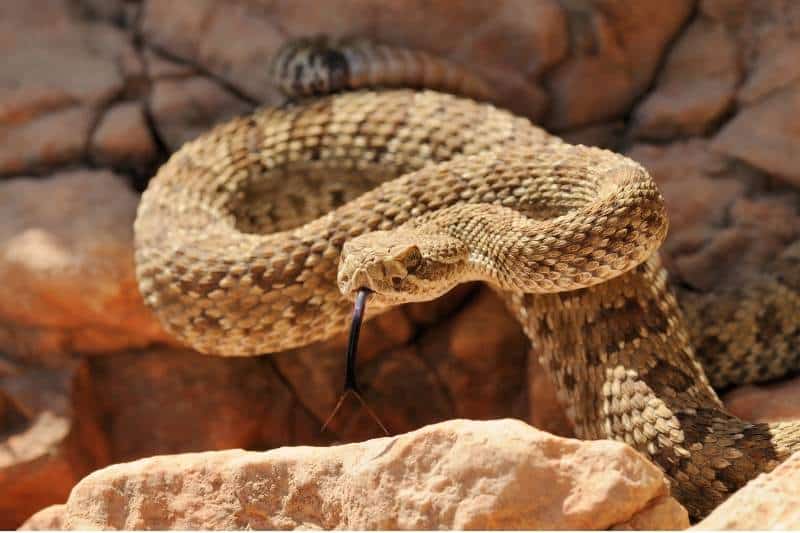
Most Prairie Rattlesnakes are brown, green, or gray, with brown patches on their backs. They have keeled, or ridged, scales.
Most of the time, these snakes consume small mammals but occasionally eat frogs and ground-nesting birds. Its venom contains neurotoxins that affect the nervous system and paralyze victims.
What Are The US States That Have No Rattlesnakes?
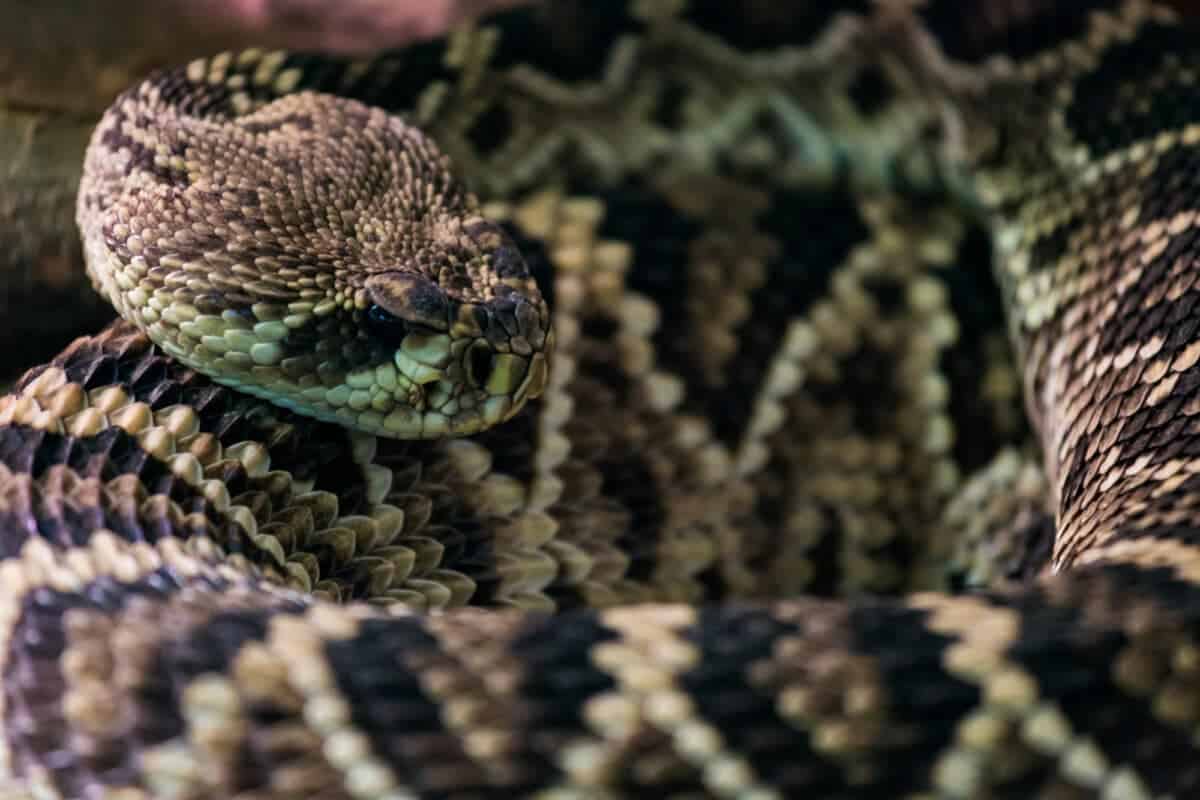
As you can see, rattlesnakes are widely present all over the US. You may be surprised to know that out of 50 states in the whole of America, there are only four states that are completely free from rattlesnakes. Those states are:
- Hawaii
- Alaska
- Rhode Island
- Maine
1. Hawaii

Hawaii is one of the luckiest states in the US, with no rattlesnakes. While there are snakes present in Hawaii, they are all non-venomous. You may wonder at this point why Hawaii doesn’t have rattlesnakes. It’s because of the following reasons:
It is illegal to own snakes as pets in Hawaii.
In Hawaii, keeping snakes as pets is illegal and a punishable crime. Doing so can lead a person to three years imprisonment and charge up to $200,000 in penalty fees.
Distance from other wildlife
Hawaii is located 2,000 miles southwest of America and formed over 30 million years ago in one of the world’s most remote regions.
Due to their extreme isolation, the plants and animals that colonized the islands have traveled more than 2,000 miles from the nearest continent. Most of the wild animals in Hawaii have relied on the winds from other remote Pacific islands to get there.
Difficult environment
Hawaii is one of the US states with no rattlesnakes because they cannot thrive there. Like many other Pacific Islands, the distance and freedom from large populations of snakes and rodents allowed ecosystems to develop that are unfit for these invasive predators.
2. Alaska

Alaska is another state in the US that has no rattlesnakes. Let’s look at the reasons that make Alaska free from rattlesnakes.
Freezing Temperatures
Alaska is naturally snake-free because of the state’s freezing weather. There is a lot of snow in the winter, and the ground freezes. Snakes live in warm climates because they have cold blood. They need the sun’s heat to warm their bodies constantly.
No Reptile Can Survive In Alaska
Due to its cold temperature, neither lizards, freshwater turtles, nor snakes are found in Alaska. So, going into the open fields of this state is safe as it is one of the US states with no rattlesnakes or other venomous reptiles. The only known reptile in Alaska is the sea turtle.
All reptiles have some degree of cold-bloodedness, and while cold-blooded animals can employ several metabolic mechanisms to stay warm, reptiles typically rely on solar energy.
3. Rhode Island
The third US state that has no rattlesnakes in Rhode Island. Even though you can find other snakes in this state, they are usually non-venomous. Rhode Island doesn’t have any rattlesnakes because;
It is illegal to own snakes as pets in Rhode Island
Without a permit, owning a poisonous snake in Rhode Island is prohibited. The only permit holder in the state is Roger Williams Park Zoo.
No Rattlesnake has Been Found Here Since 1970.
Rhode Island had timber rattlesnakes, but they vanished some fifty years ago. Other snake species have populations in nearby Connecticut and Massachusetts, but Rhode Island lacks the essential habitat for snake populations to survive.
4. Maine
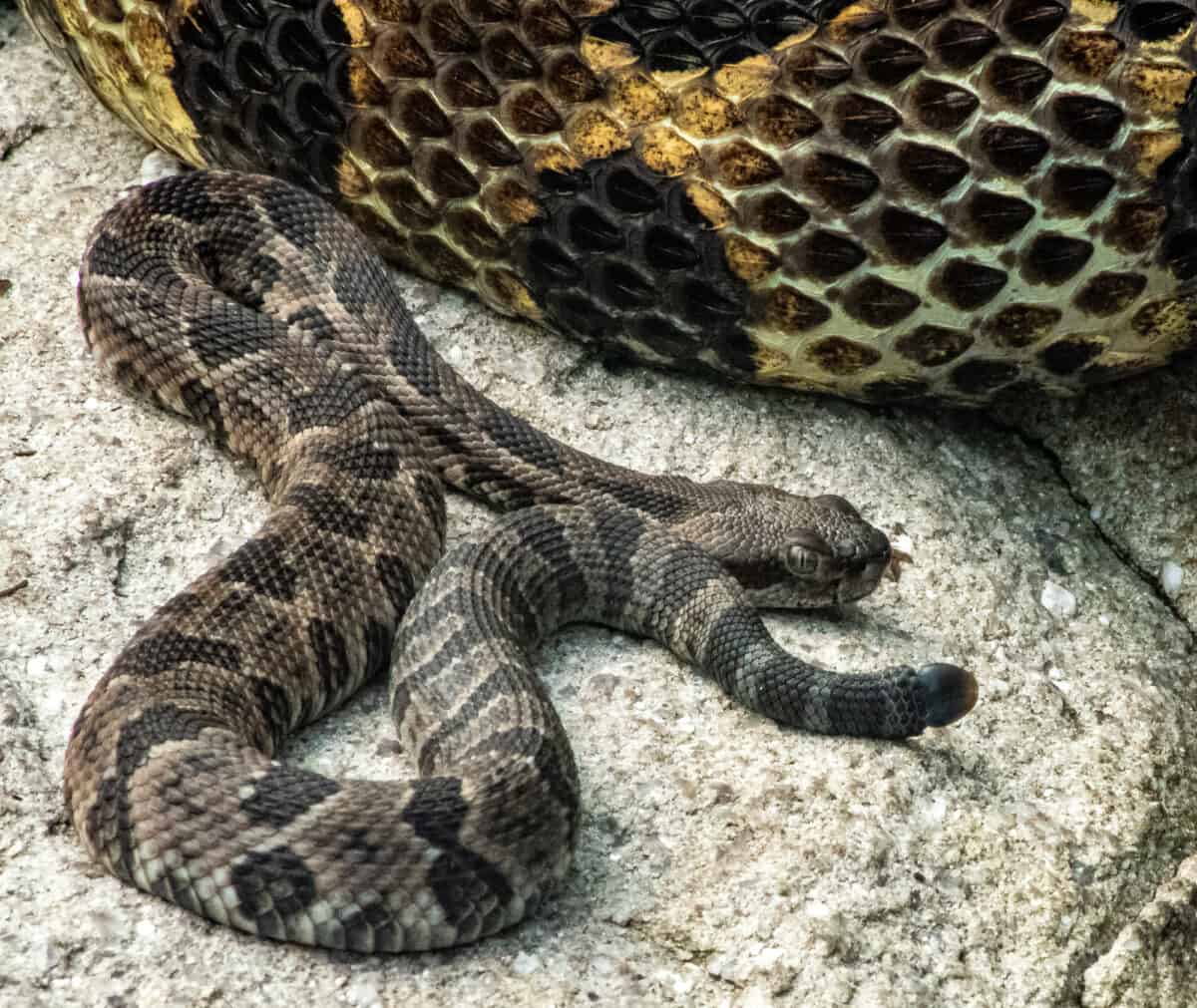
The fourth state that doesn’t have rattlesnakes in Maine. Though it wasn’t always this way, it is currently one of the only states that are rattlesnake-free.
In the once-wild highlands of Western Maine, the Timber Rattlesnake would be found easily, though probably only in tiny numbers.
Here are the main reasons that rattlesnake populations did not survive in Maine:
No Rattlesnake Since Last Century
In Maine, rattlesnakes were most likely eradicated before the beginning of the 20th century. Because they were so dangerous, people killed them in large numbers until none were left.
Rattlesnakes Can’t Survive In The State’s Climate.
Since rattlesnakes can’t tolerate extreme heat or cold, Maine is not their ideal habitat. These snakes prefer temperatures between 80 and 90 °F. They will hide underground in tunnels or beneath rocks during the hottest part of the day.
How To Deal With A Rattlesnake
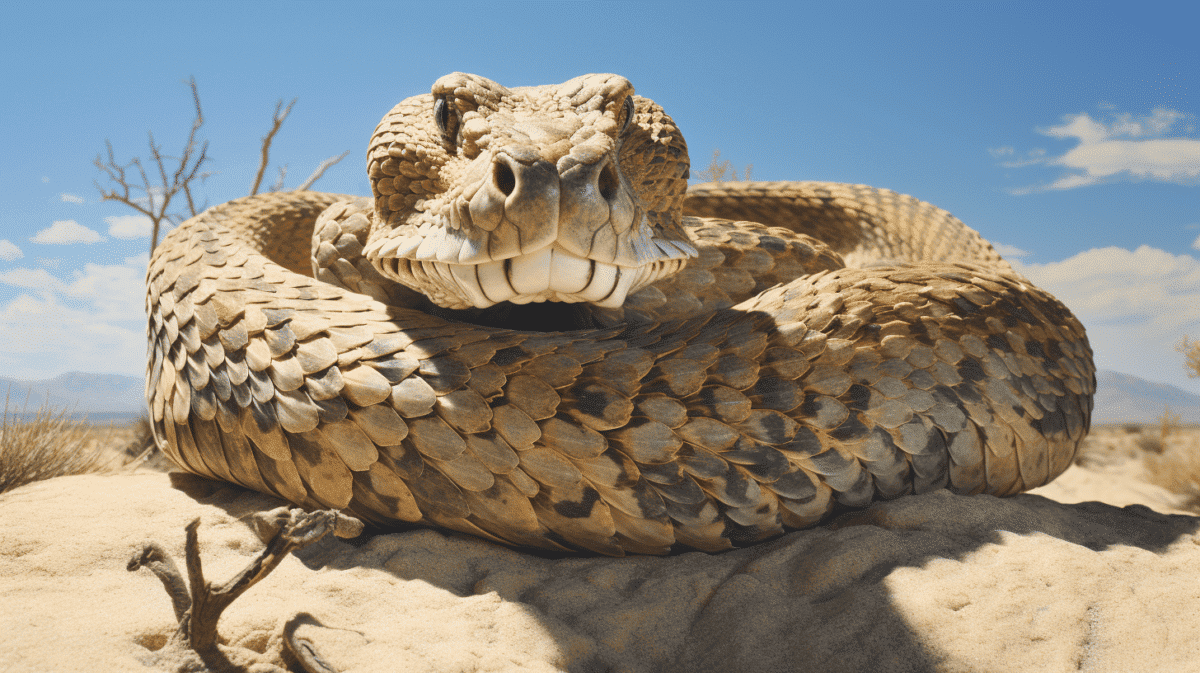
Rattlesnakes are pretty vicious snakes, and their bite can sometimes kill a person. It is best to avoid going where they can be found easily as they do not attack until they feel in danger.
Also, pay attention to following tips discussed below to ensure safety:
1. Keep Minimal Contact
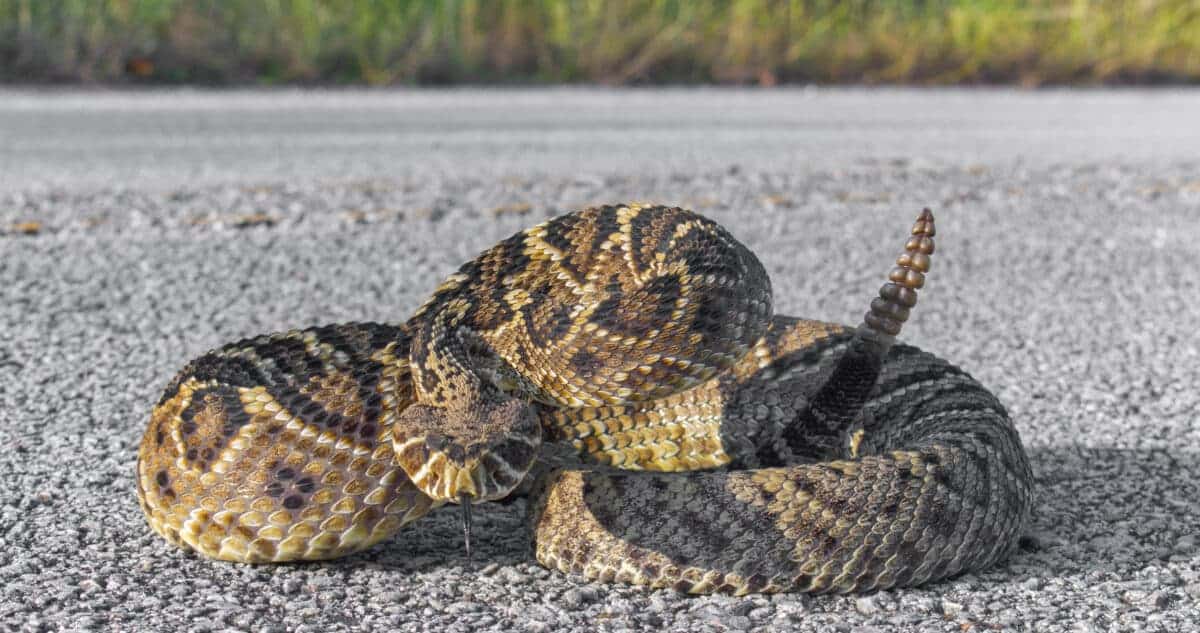
Identifying the sort of rattlesnake you have come in contact with is crucial because rattlesnake venom can vary greatly depending on the species. Specific anti-venom might be necessary, depending on the species.
If you keep them as pets, direct touch should be minimized to an absolute minimum when communicating with them, and you must take appropriate safety measures.
2. Don’t Try To Provoke Them
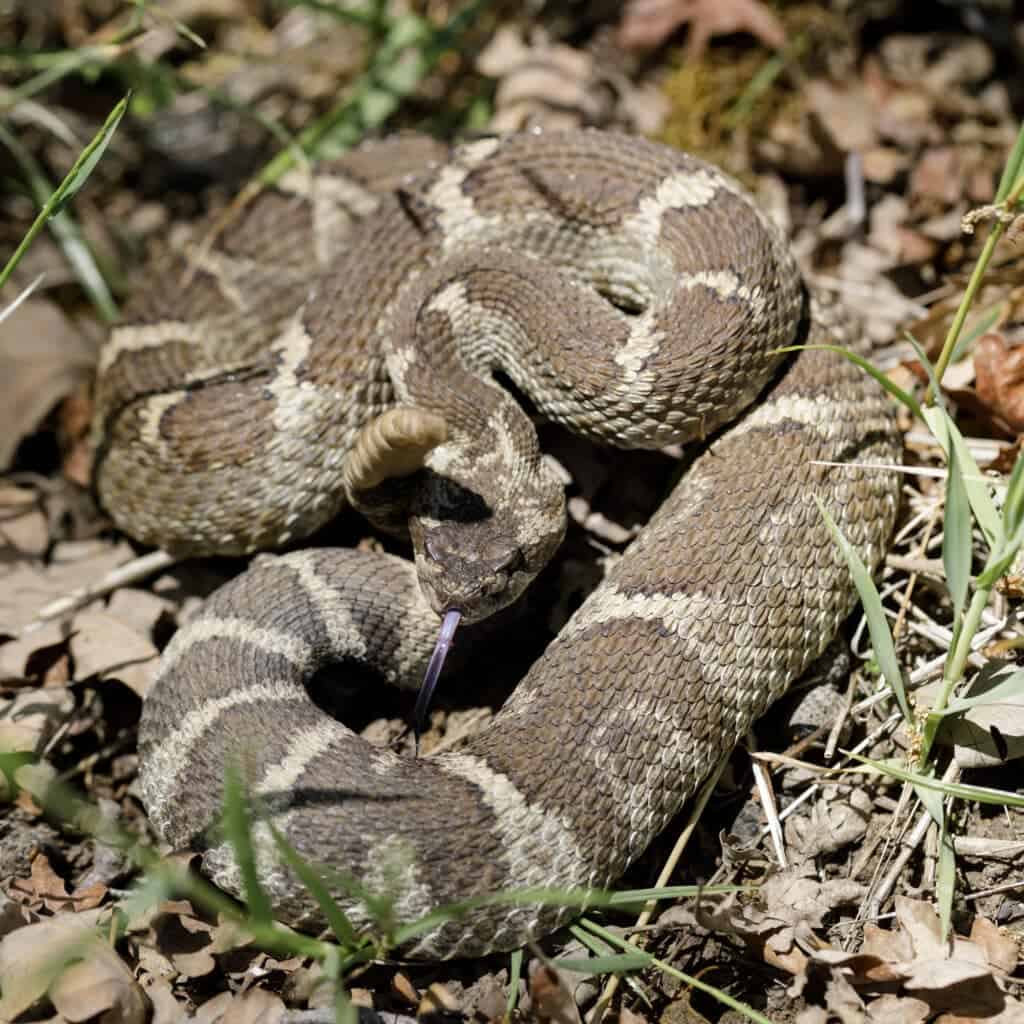
Rattlesnakes typically stay away from people, yet every year in the US, 8,000 individuals get bitten by deadly snakes. Rattlesnakes are not aggressive; they typically strike only when threatened or purposefully provoked.
Most rattlesnake bites happen when someone walks or climbs and accidentally touches them.
3. Wear Long Boots In Open Fields

If a rattlesnake attacks you, it will bite your shins or ankles. As a result, it’s wise to wear high boots that shield your ankles when roaming in a rattlesnake area.
For maximum defense against ticks and rattlesnakes, you should wear long pants, long sleeves, and high-top boots.
4. Keep Your Dog On A Leash
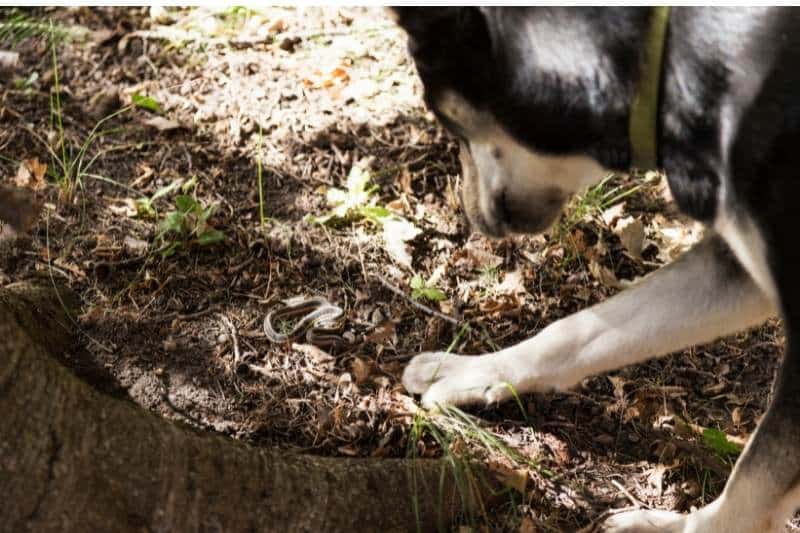
Dogs like to explore and are low to the ground, so they are considerably more likely to get bitten than people are. Keep your dog on a leash if you anticipate seeing rattlesnakes while trekking.
5. Step Away When You See A Rattlesnake

Any snake, regardless of type, should not be approached, whether it is rattling or not. Start making gradual movements away from one as soon as you spot it. Rattlesnakes don’t seek to attack humans and aren’t hostile.
The reason it’s so crucial to walk gently and maintain your composure is because they perceive humans as threats to their lives if someone approaches them quickly or is too close by.
Conclusion on US States without Rattlesnakes
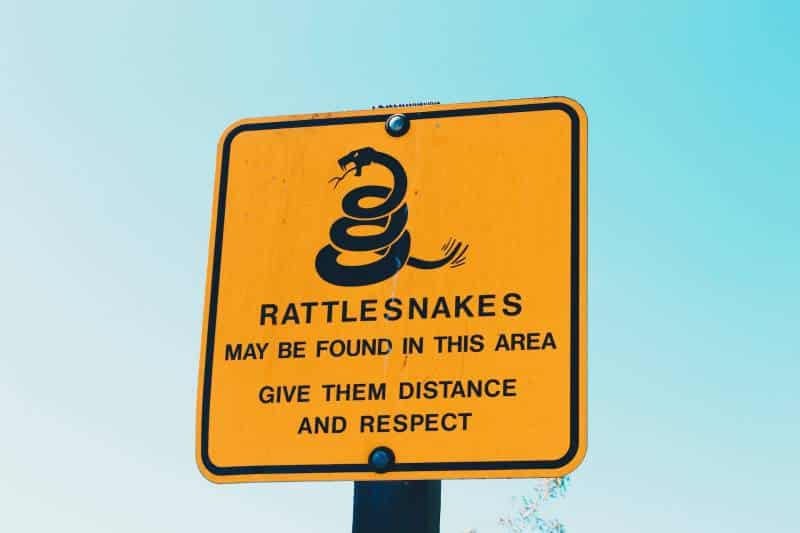
The Rattlesnake is one of the most poisonous snakes and has a cunning nature. There are a few places without rattlesnakes, so it is always worthwhile to check where you can encounter them to be prepared.
As with all cold-blooded animals, rattlesnakes require warmth to survive, so you are unlikely to find them in frigid climates.
Rattlesnakes might be dangerous, but they are still vital to our ecosystem. Just because we are afraid of them doesn’t mean we should kill them. Rather stay vigilant, be wise, and avoid them when encountering rattlesnakes on your adventures.
If you want to learn more about snakes you might encounter on your travels, look at our article that looks at all venomous snakes in the US or, generally, our articles about the USA.
- Sardine Run: All you need to know - April 19, 2024
- US States That Don’t Have Rattlesnakes - March 29, 2024
- Meet The Largest Zoo In The United States - March 23, 2024

